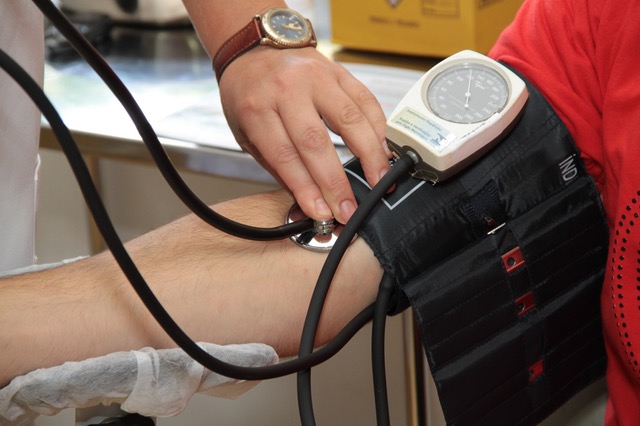Check out our PowerPoint slideshow on using data crunching technology to improve workers’ compensation.
Top 5 Articles of 2016
From how to use an inclinometer correctly to understanding why a panel QME gets involved in a work injury, read up on the best workers’ compensation content of the past year.
- What’s A QME?
- Muscle Atrophy
- Exacerbation vs. Aggravation
- Activities of Daily Living
- How to use an Inclinometer
Do you have a workers’ compensation topic you’d like to see covered? Email us and we’ll put our best people on it!
Automated Impairment Rating: The Science Behind RateFast
RateFast automates the impairment rating process, giving providers and injured workers the ability to generate accurate analyses of occupational injuries based on the AMA Guides to Impairment Rating.
But how is it done?
Listen to the podcast or keep reading to discover how CPA Josh Moore applies knowledge from accounting to the development of the RateFast impairment rating system.
Continue reading Automated Impairment Rating: The Science Behind RateFast
The Art of the Qualified Medical Exam
A QME is a medical professional who is credentialed by the state to perform qualified medical examinations required for certain workers’ compensation cases. For a more detailed look at what a QME is, take a look at this article.
Recently on the RateFast Work Comp Report podcast we interviewed Dr. Nissen about being a Qualified Medical Examiner (QME). Dr. Nissen discussed what he called “the art of the QME”—a skillset that involves using creativity and critical thinking to overcome several unique challenges.
A few of these challenges are described below.
Understanding the American Medical Association Guide to Impairment Rating and Evaluation.
Using the huge tome commonly known as the AMA Guides demands a depth-of-knowledge that few physicians take the time to develop. In order to serve as an effective impartial examiner, the QME is responsible for knowing the Guides back-to-front. This knowledge directly informs all other aspects of QME’s work with the claim, from performing the physical exam to determining impairment.
Assessing previous medical charts.
Medical charts for a single patient are often hundreds of pages long, and the ability to review them for relevant information takes practice, insight, and real-time analysis.
Performing an accurate physical evaluation.
The QME evaluates the patient according to the Guides, reviewing all thirty-four activities of daily living, and taking repeated measurements depending on the type of injury. A correct evaluation requires extensive knowledge of the Guides and rigorous attention to detail.
Creating a precise and correct impairment rating.
All of the relevant medical charts and all new information generated by the QME’s physical exam must be collected into the QME’s report. This data must be accurate; after all, the QME’s role is to bring objectivity to the claim, so reproducibility of results is key.
Conclusion
Dr. Nissen argues that in order for QME reports to truly benefit injured workers, physicians need a system for collecting consistent data. Accurate and meaningful data results in less legation, and ultimately the speedy close of the workers’ compensation claim.
Fortunately, such a system has been developed. RateFast is a total workers’ compensation solution that helps providers perform perfect exams, document patient medical histories, format and organize reports, and determine impairment ratings according to the AMA Guides. We urge medical providers, QMEs, and anyone who is interested in improving workers’ compensation to join RateFast for free.
Sub Rosas in Workers’ Comp
This article is for medical providers, insurance adjusters, and attorneys who want to better understand the process of a Sub Rosa within the context of a workers’ compensation case.
What is a Sub Rosa?
Sub Rosa is a fancy latin term that literally means “Under the Rose.” In workers’ compensation, however, it means secret investigation—surveillance. During a Sub Rosa investigation, usually an investigator is sent out to survey the injured worker. The investigator attempts to observe what level of physical activity the injured worker can or cannot perform. The second, and less common use of Sub Rosa in work comp is to investigate a doctor, an employer, work sites, and/or working conditions.
What are the stakeholders looking for in a Sub Rosa?
When insurance adjusters, employers, or medical providers require a Sub Rosa investigation, they are normally looking evidence that an employee can perform observable physical activities that are in excess of what they claim they can do.
For instance, an injured worker may report that they can’t lift anything, or can’t bend over, or can’t walk without a cane. The fundamental purpose of this surveillance is to verify or disprove the validity of what the person is claiming in regards to their physical or psychological conditions.
Sometimes a patient may claim that they have good days and bad days. In these cases, their limitations ambiguous. It’s very important, therefore, that Sub Rosas span several, separate days, to provide an accurate view of the patient’s conditions.
What should the doctor do while viewing surveillance footage of a patient?
Most surveillance tapes are dead-boring. It is advisable for the doctor to dictate what she observes the patient doing while she watches the tape. It’s also important for the doctor to state whether she can clearly identify that the person being filmed is the patient in question, or whether she knows it is certainly not the patient, or whether she can’t tell.
When should an attorney consider requesting a Sub Rosa?
An attorney may consider a Sub Rosa to be useful if one or more of the following are present:
- Is the patient off from work for a much longer time than is typical for their condition?
- Does the patient have a history of workers’ comp cases where this has been a trend?
- Do physical findings corroborate with the patient’s description of their symptoms?
Should a doctor confront the patient with apparent discrepancies before recommending a Sub Rosa?
Yes. There is a lot that can be gained from a frank discussion with the patient about their symptoms and physical findings. Here at RateFast, we are committed to remaining non-partisan—we believe the ultimate goal of a workers’ compensation claim should be to get patients safely back to work. Therefore, we recommend an open and honest discussion with the injured worker before considering surveillance.
Telemedicine
Telemedicine is the delivery of medical care, including an actual discussion of medical history and a physical exam.
Just like an office visit, in a telemedicine visit the doctor interviews the patient, gets a complete history, and then performs an exam. Recent advances in technology now allow providers to remotely measure blood pressure, oxygen saturation, cardiac and lung auscultation. They can even look at the tympanic membranes of the inner ear drum or take high resolution pictures of the skin without actually being in the same room as the patient.
What is a QME?
This article is intended for anybody who is interested in learning about the role of a QME in California workers’ compensation.
When should an injured worker get an attorney?
If you’re a medical provider in workers’ compensation, then sometimes your patients might want legal representation.
When your patients ask, “Should I get an attorney?” then we recommend referring them the Disability Evaluation Unit.
To learn why, listen to our podcast on the subject here: “Attorneys in Workers’ Comp: A Historical Perspective” (released September 3rd, 2015).
The DEU has offices in the following locations:
| Anaheim 1065 N. PacifiCenter Drive Anaheim, CA 92806 (714) 414-1803 |
Oxnard 1901 N. Rice Avenue, Suite 200 Oxnard, CA 93030 (805) 485-4423 |
San Francisco 455 Golden Gate Avenue, 2nd floor P.O. Box 420603 San Francisco, CA 94142 (415) 703-5030 |
| Bakersfield 1800 30th Street, Suite 100 Bakersfield, CA 93301-1929 (661) 395-2723 |
Pomona 732 Corporate Center Drive Pomona, CA 91768 (909) 629-6288 |
San Jose 100 Paseo de San Antonio, Room 223 San Jose, CA 95113 (408) 277-2024 |
| Eureka * Satellite office Ratings to be sent to Redding |
Redding 250 Hemsted Drive, Second Floor, Ste. B Redding, CA 96002 (530) 225-3179 |
San Luis Obispo 4740 Allene Way, Suite 100 San Luis Obispo, CA 93401 (805) 596-4157 |
| Fresno 2550 Mariposa Mall, Room 2005 Fresno, CA 93721-2280 (559) 445-6427 |
Riverside 3737 Main Street, 3rd floor Riverside, CA 92501 (951) 782-4345 |
Santa Ana 605 W Santa Ana Blvd, Bldg 28, Room 451 Santa Ana, CA 92701 (714) 558-4113 ext. 6749 |
| Long Beach 300 Oceangate Street, Room 325 Long Beach, CA 90802-4460 (562) 590-5017 |
Sacramento 160 Promenade Circle, Suite 300 Sacramento, CA 95834 (916) 928-3150 |
Santa Barbara * Satellite office Ratings to be sent to Oxnard |
| Los Angeles 320 W. 4th Street, 9th floor Los Angeles, CA 90013 (213) 576-7426 |
Salinas 1880 North Main Street, Suites 100/200 Salinas, CA 93906-2204 (831) 443-3222 |
Santa Rosa 50 “D” Street, Suite 420 Santa Rosa, CA 95404 (707) 576-2374 |
| Marina del Rey 4720 Lincoln Blvd 2nd floor Marina del Rey, CA 90292 (310) 482-3868 |
San Bernardino 464 W. Fourth Street, Suite 260 San Bernardino, CA 92401 (909) 383-4522 |
Stockton 31 East Channel Street, Room 417 Stockton, CA 95202-2314 (209) 948-3651 |
| Oakland 1515 Clay Street, 6th floor Oakland, CA 94612 (510) 622-2859 |
San Diego 7575 Metropolitan Drive, Suite 202 San Diego, CA 92108 (619) 767-2081 |
Van Nuys 6150 Van Nuys Blvd., Room 200 Van Nuys, CA 91401-3373 (818) 901-5376 ext. 5 |
Attorneys in Workers’ Comp: Who they are, what they do, and when to get one
Roles that Defense and Applicant Attorneys play in Workers’ Comp: A historical perspective
Many workers’ compensation claims today involve an attorney at some point. The work comp system, when it came to the United States from Germany, was supposed to be simple, transparent and efficient—a system without attorneys or judges, that focused on three simple steps:
- Medical treatment
- Patient recovery
- Patient’s return to work
Any permanent impairment would be measured by a doctor with a simple formula, and would tell you how much that injury was worth.
Permanent disability, on the other hand, was originally used to measure the amount of machines the worker could no longer operate. The amount of compensation that the injured worker received would then come from that loss.
So, how did work-comp become one of the most complicated areas of law?
Why are defense attorneys involved in today’s workers’ compensation system? There are two primary reasons why attorneys need to get involved:
- Suspicious circumstances – Employees sometimes try to obtain compensation that they’re not entitled to.
- Denied medical treatment – Employees sometimes do not receive the treatment that they are entitled to.
This, in turn, results in:
- Increased cost of the claim.
- Increased amount of medical treatment ultimately provided.
And, finally, that an injured worker seeks out an attorney. This can then further result in additional body parts being added to the claim. Therefore, providers should always be asking themselves:
“How do I get this case accurately resolved, in the fastest amount of time?”
When this doesn’t happen, lawyers get involved.
Related Reading
What is the technical definition of ‘Impairment’?
- impair (v.) l, from Old French empeirier, from Latin impeiorare “make worse.” In reference to driving under the influence of alcohol, first recorded 1951 in Canadian English.
Okay…. But what does Impairment mean in the world of Workers’ Compensation?
If you’re a medical professional who examines injured employees, then impairment means “a loss, loss of use, or derangement.” (That’s straight out of the in the AMA Guides 5th Edition, Chapter 1, page 2.)
An injured worker’s impairment is considered permanent when the injury reaches “maximum medical improvement” or “MMI”.
Maximal medical improvement means the patient’s condition is unlikely to change in one year.
The AMA Guides 5th edition refers to impairment as permanent impairment. Permanent impairment requires evaluation of a physician.
Remember, loss, loss of use, or derangement means a change from normal.
So, let’s take this example: imagine a 27-year-old construction worker who has injured her right shoulder. At MMI, you as a doctor, measure the injured shoulder, which flexes to 160°, and then you measure the uninjured shoulder, which comes out to 180°. Does this patient have impairment?
The answer yes, because the employee has lost 20° of use.







